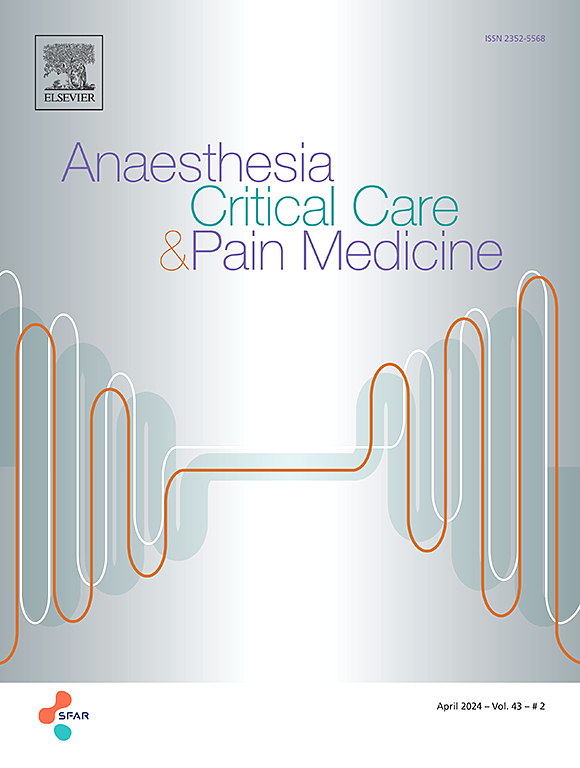围手术期通气支持,临床医生和研究人员必须知道的。
IF 4.7
3区 医学
Q1 ANESTHESIOLOGY
引用次数: 0
摘要
术后肺部并发症(PPC)影响超过10%的外科患者,特别是腹部、胸部或心脏手术后。了解PPC的病理生理和危险因素为预防策略提供了有效的框架。所有接受大手术的患者,尤其是手术部位靠近横膈膜的患者,呼吸功能都会发生明显改变。观察到的主要变化是肺容量减少,伴有呼吸力学限制性模式的发展,肺不张和膈功能障碍。低氧血症通常发生在大手术后,并可能导致急性呼吸衰竭(ARF)。术后ARF可能需要重新插管,这与死亡率和保健相关肺炎有关。围手术期正压通气概念包括多种干预措施,从正压预充氧到术中肺保护性通气和量身定制的术后无创呼吸支持。这些战略旨在减轻ARF的发病并防止肺容量减少。尽管手术和麻醉后呼吸功能的改变是不可避免的,围手术期干预可以显著减少并发症。正压预充氧增强了插管过程的安全性,并防止肺容量的减少。术中肺保护通气与低至中等潮汐量相关,基于预测体重,呼气末正压和谨慎的招募操作可有效降低PPC。无创通气(NIV)和高流量鼻氧合(HFNO)在预防PPC中的各自作用仍有待阐明。它们在预防ARF发病方面的有效性可能取决于识别高危患者并相应地调整干预措施的能力。目前的证据支持,与传统氧疗或HFNO相比,治疗性NIV是治疗术后ARF的金标准。随着对大手术与呼吸功能之间复杂相互作用的理解不断发展,围手术期调整通气支持的方法也必须不断发展。本文章由计算机程序翻译,如有差异,请以英文原文为准。
Perioperative ventilation support, what clinicians and searchers must know
Postoperative pulmonary complications (PPC) affect over 10% of surgical patients, especially after abdominal, thoracic, or cardiac surgery. Understanding PPC’s pathophysiology and risk factors provides an effective framework for prevention strategies. Significant alterations of the respiratory function occur in all patients undergoing major surgery, especially if the surgical site is close to the diaphragm. The main changes observed are a reduction in lung volumes, with the development of restrictive patterns of respiratory mechanics, atelectasis, and diaphragmatic dysfunction. Hypoxemia often develops in patients after major surgery and may lead to acute respiratory failure (ARF). Postoperative ARF may require reintubation, which has been associated with mortality and healthcare-associated pneumonia. The Peri-Operative Positive Pressure (P.O.P) Ventilation concept includes multiple interventions ranging from positive pressure pre-oxygenation to intraoperative lung protective ventilation and tailored postoperative noninvasive respiratory support. Such strategies aim to mitigate the onset of ARF and prevent a reduction in lung volumes. Despite the inevitability of respiratory function alterations after surgery and anesthesia, perioperative interventions can significantly reduce complications. Positive pressure pre-oxygenation enhances the safety of the intubation procedure and prevents the decrease in lung volumes. Intraoperative lung-protective ventilation associating low to moderate tidal volumes based on predicted body weight, positive end-expiratory pressure, and careful recruitment maneuvers have been effective in decreasing PPC. The respective roles of noninvasive ventilation (NIV) and high-flow nasal oxygenation (HFNO) in preventing PPC remain to be clarified. Their efficacy in preventing the onset of ARF may depend on the ability to identify high-risk patients and tailor interventions accordingly. Current evidence supports curative NIV as the gold standard to treat postoperative ARF in comparison to conventional oxygen therapy or HFNO. As the understanding of the complex interplay between major surgery and respiratory function evolves, so must approaches to tailoring perioperative ventilation support.
求助全文
通过发布文献求助,成功后即可免费获取论文全文。
去求助
来源期刊

Anaesthesia Critical Care & Pain Medicine
ANESTHESIOLOGY-
CiteScore
6.70
自引率
5.50%
发文量
150
审稿时长
18 days
期刊介绍:
Anaesthesia, Critical Care & Pain Medicine (formerly Annales Françaises d''Anesthésie et de Réanimation) publishes in English the highest quality original material, both scientific and clinical, on all aspects of anaesthesia, critical care & pain medicine.
 求助内容:
求助内容: 应助结果提醒方式:
应助结果提醒方式:


